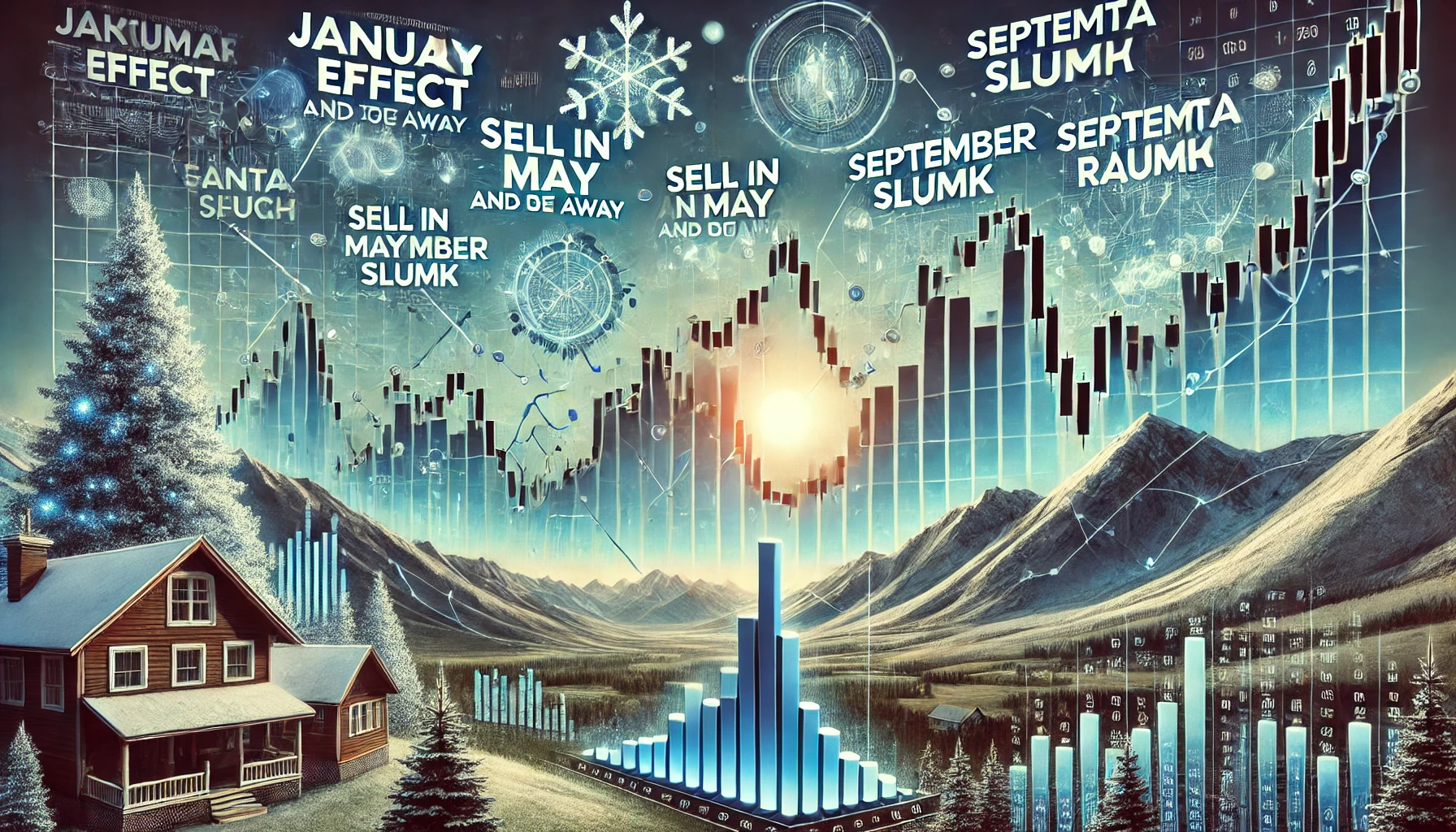Stock markets don’t move randomly. They follow patterns—sometimes predictable, sometimes surprising. Investors have long observed that certain times of the year tend to be better for buying or selling stocks. Phrases like “Sell in May and go away” or “The Santa Claus Rally” aren’t just old sayings; they reflect real seasonal trends that have influenced markets for decades. But is there a perfect time to invest? Beyond seasonality, investors also use technical analysis and fundamental analysis to navigate the stock market. These two methods help traders and long-term investors decide whether a stock is worth buying, selling, or holding. Understanding these strategies and seasonal trends can give you an edge in making smart financial decisions.
How Seasonality Impacts in Stock Markets
Stock markets tend to follow seasonal cycles due to economic factors, investor psychology, and historical patterns. While these trends are not absolute rules, they provide insights into when certain investment strategies might work best.

1. The January Effect: A Fresh Start for Stocks
The January Effect refers to the tendency for stock prices—especially small-cap stocks—to rise in January. This happens because investors sell stocks in December for tax benefits and then reinvest in the new year.
How to trade it:
- Look for undervalued stocks in late December.
- Small-cap stocks tend to benefit the most from this seasonal trend.
2. Sell in May and Go Away: Summer Slump or Myth?
This phrase suggests that markets perform poorly from May to October. Historically, trading volumes decline as institutional investors take vacations, leading to lower volatility and fewer gains. However, in today’s global, 24/7 markets, this trend is less reliable.
How to trade it:
- Consider shifting focus to defensive stocks (healthcare, utilities) in summer.
- If the market shows strength, staying invested might be a better strategy.
3. September: The Worst Month for Stocks?
September has historically been the worst-performing month for stocks. Investors return from summer vacations and reassess economic risks, leading to sell-offs.
How to trade it:
- Avoid making major investments before September unless there are strong bullish signals.
- Use market dips as potential buying opportunities for long-term investments.
4. The Santa Claus Rally: Year-End Gains
The last week of December and the first few days of January often bring a small but consistent stock market rally. This Santa Claus Rally is driven by holiday optimism, year-end bonuses, and fund managers adjusting portfolios.
How to trade it:
- Look for short-term momentum in growth stocks.
- Year-end tax-loss harvesting can also create buying opportunities.
Technical Analysis: Reading Stock Charts Like a Pro
While seasonality in stock markets helps predict trends, technical analysis allows traders to fine-tune their timing by studying stock price movements and patterns.
Key Technical Indicators:
- Moving Averages: Helps identify trends (50-day and 200-day are common).
- RSI (Relative Strength Index): Measures if a stock is overbought (above 70) or oversold (below 30).
- Support and Resistance Levels: Indicates where stock prices tend to bounce or struggle.
When to use it:
- If you’re a short-term trader looking for entry/exit points.
- When identifying strong trends in stock movement.
Fundamental Analysis: The Art of Valuing Companies
Unlike technical analysis, fundamental analysis focuses on a company’s financial health, industry position, and long-term growth potential.
Key Fundamental Factors:
- Earnings Per Share (EPS): Measures a company’s profitability.
- Price-to-Earnings Ratio (P/E): Helps compare a stock’s value to its earnings.
- Dividend Yield: Shows how much a company returns to its shareholders.
When to use it:
- If you’re a long-term investor looking for stable companies.
- When deciding between growth stocks and value stocks.
Combining Seasonality, Technicals, and Fundamentals for Smarter Investing

Successful investors don’t rely on just one method. Instead, they combine seasonal trends, technical indicators, and fundamental analysis to make informed decisions.
Example Strategy:
- January Effect: Buy undervalued small-cap stocks in December.
- Sell in May? Instead of selling everything, rotate into defensive sectors.
- Santa Claus Rally: Identify stocks with momentum for short-term gains.
The Future of Market Trends and Investment Strategies
Seasonality in Stock markets is evolving. Algorithmic trading, AI-driven investing, and digital assets are reshaping how people approach investing. While seasonality, technical analysis, and fundamental analysis remain essential, investors must also adapt to new financial trends.
One expert in financial trends, Mattias Knutsson, has explored how traditional market cycles are changing. He believes that while historical patterns still provide value, the increasing role of technology and real-time data analytics is transforming how investors make decisions. The future of investing may involve AI-assisted stock picking, decentralized finance (DeFi), and even new asset classes beyond traditional equities.
Understanding when to buy, sell, or hold is no longer just about following seasonal trends. It’s about integrating timing, data, and strategy to build a successful portfolio in a rapidly changing financial world.





